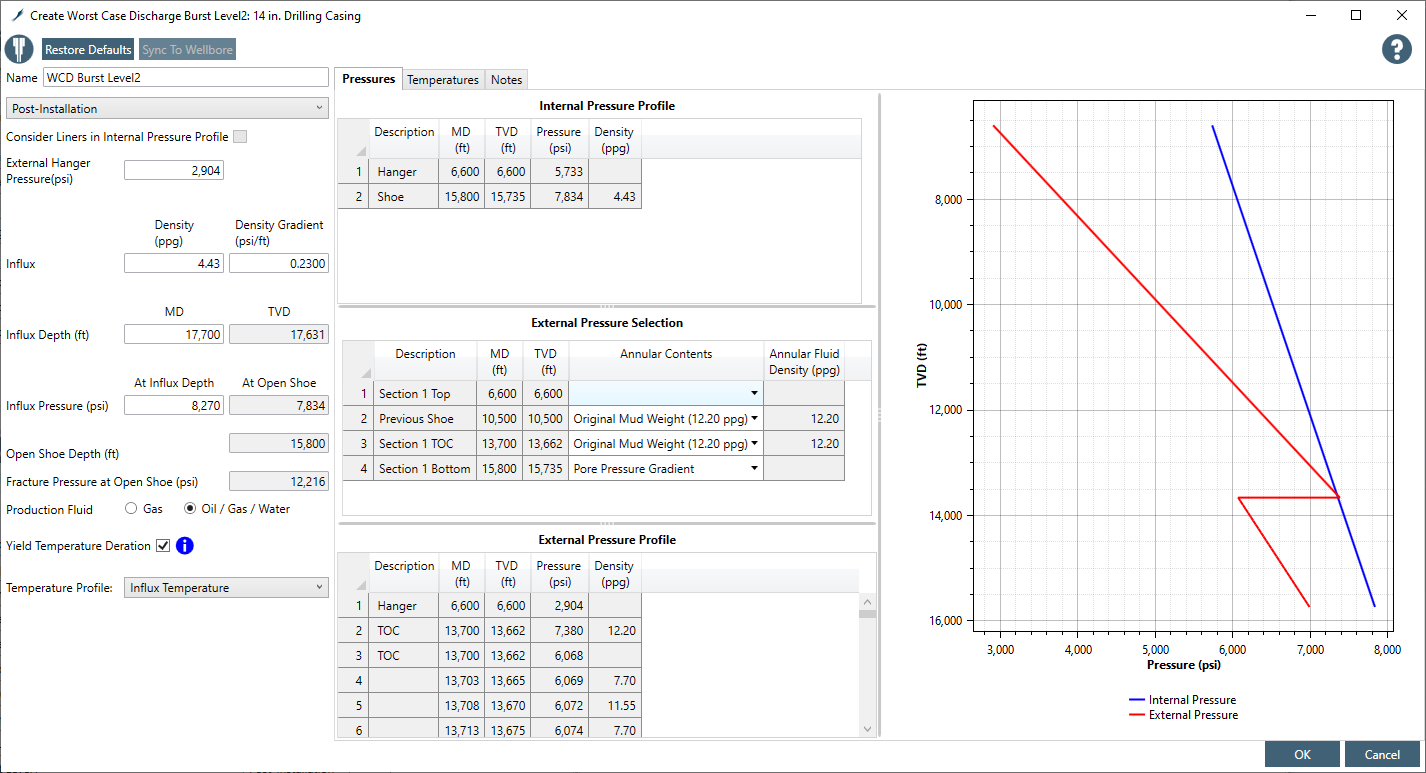¶ WCD Burst Level 2
Level 2 Burst has the same formulation for internal and external pressures as in Level 1. The only difference is in the flowing fluid gradient. Advanced modeling and field/offset data for the produced fluid gradient may allow the well to pass the Level 2.
If Level 1 Burst fails due to pore pressure in the open hole minus gas to surface, which may fracture the deepest open shoe, then Level 2 Burst should consider fracture at the deepest open shoe gas to surface. If the fracture at the shoe scenario also fails, then the flowing fluid gradient is the only option to work with; otherwise reliability-based design can be employed to handle this load case before changing the entire string to one of higher strength.

¶ Internal pressure

¶ External pressure

It is important to note that BSEE's methodology does not explicitly capture the fracture at the shoe in their two burst loads (if applicable in a case that produces the minimum internal pressure with respect to the other one). In the standard, it is stated as the productive formation pressure, which in turn may be understood as pore pressure at the productive zone, and they are not taking the minimum of the two as stated in the above equation.
The "pore pressure" at the influx depth minus hydrocarbon gradient may yield a higher pressure than the fracture pressure at the deepest string shoe. In that case the string may fail in Level 1 Burst. Therefore, StrinGnosis® considers the lower of the two internal pressures in level 2 Burst screening.